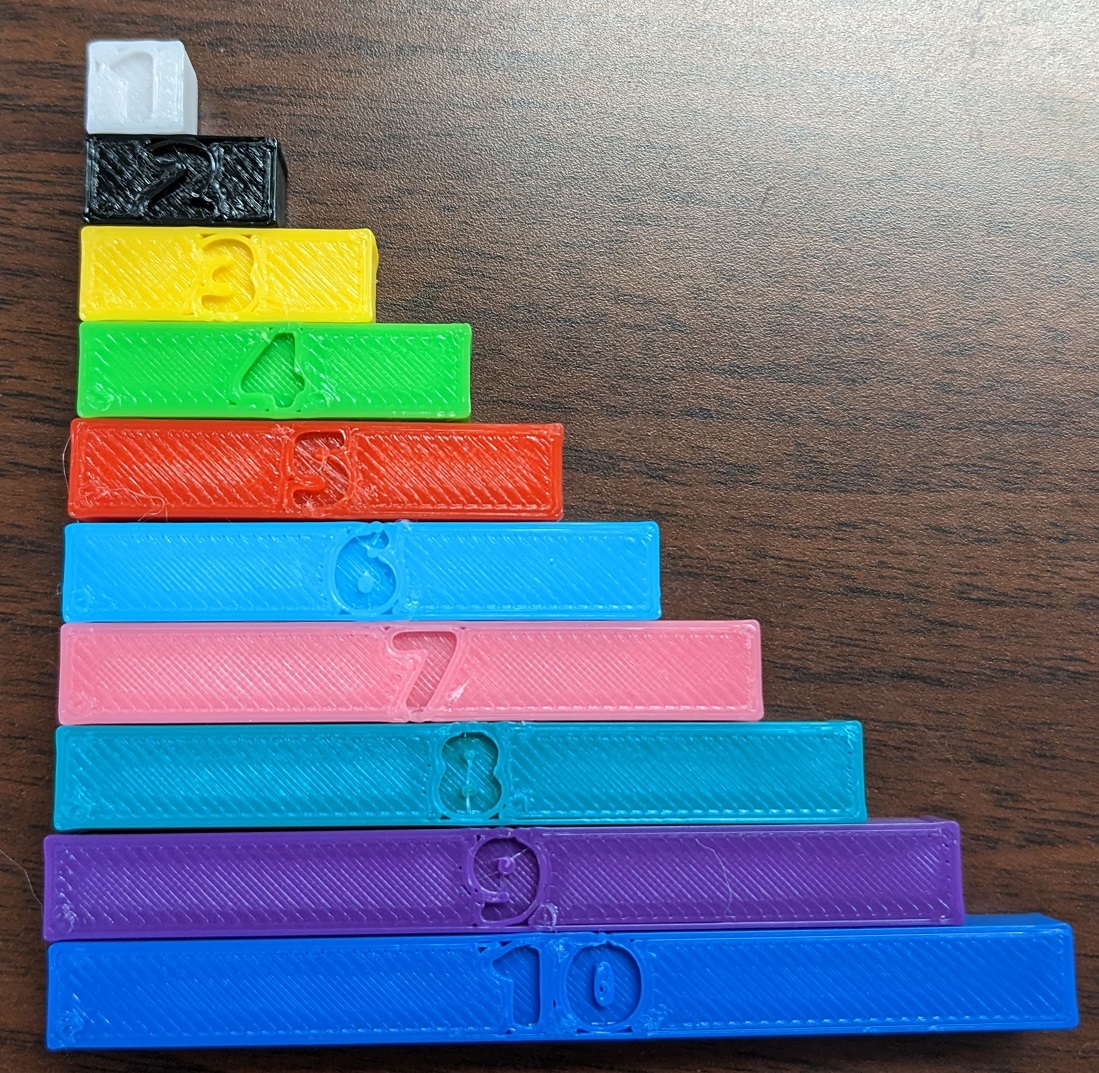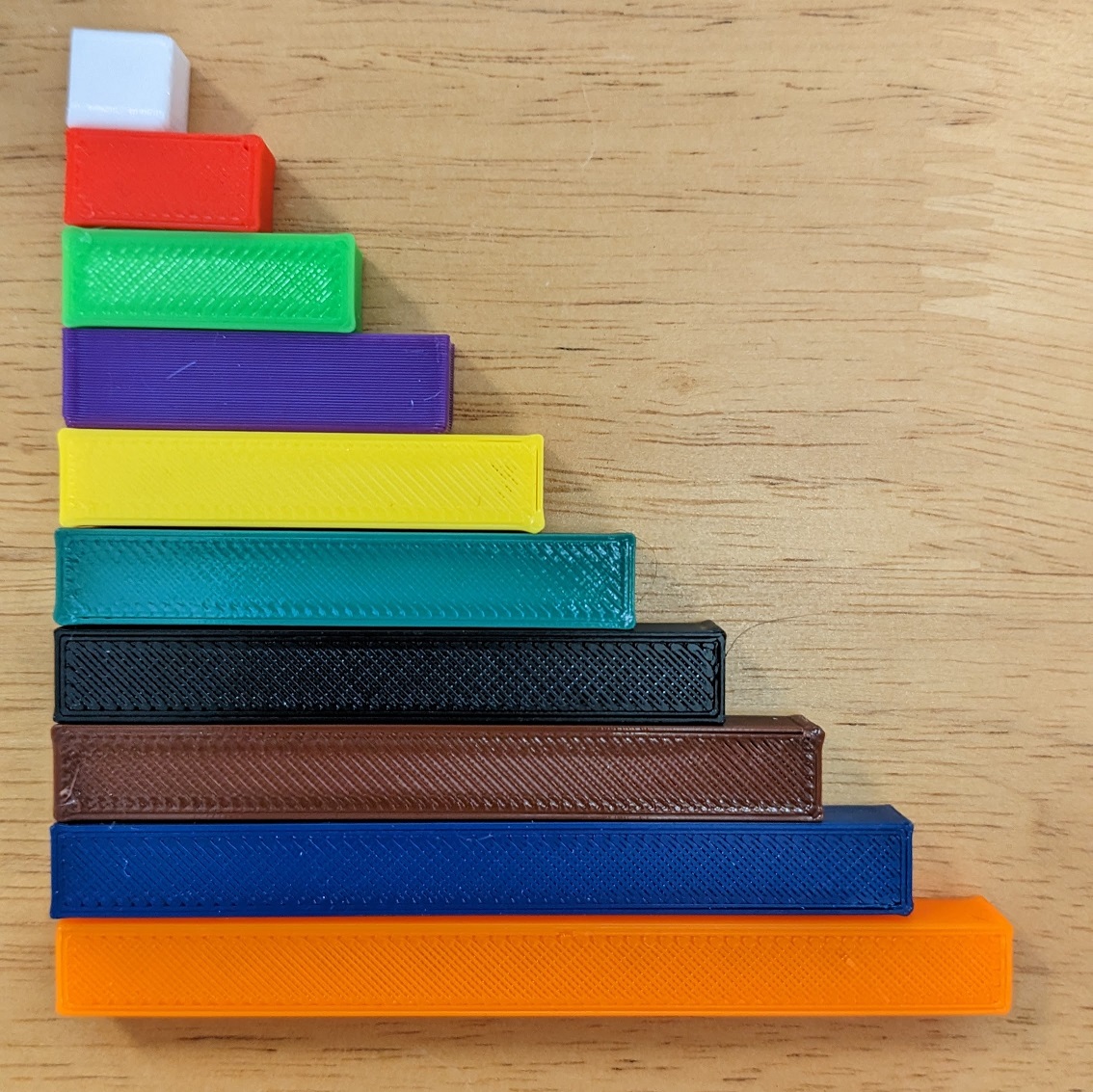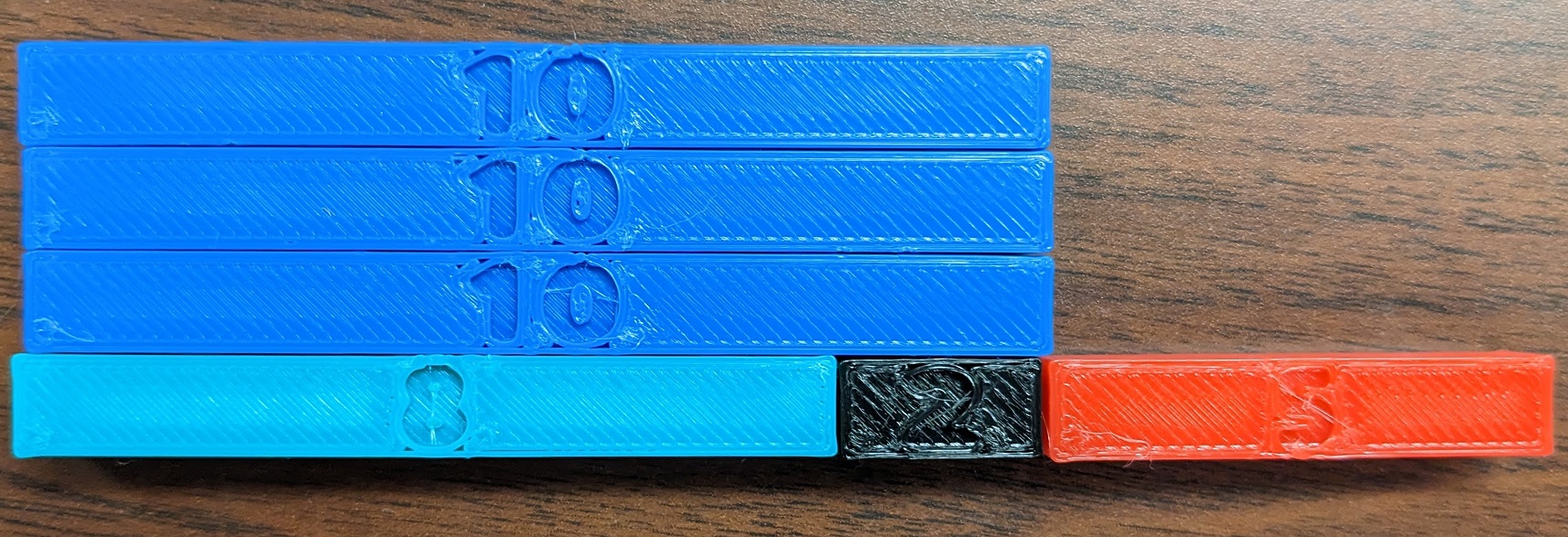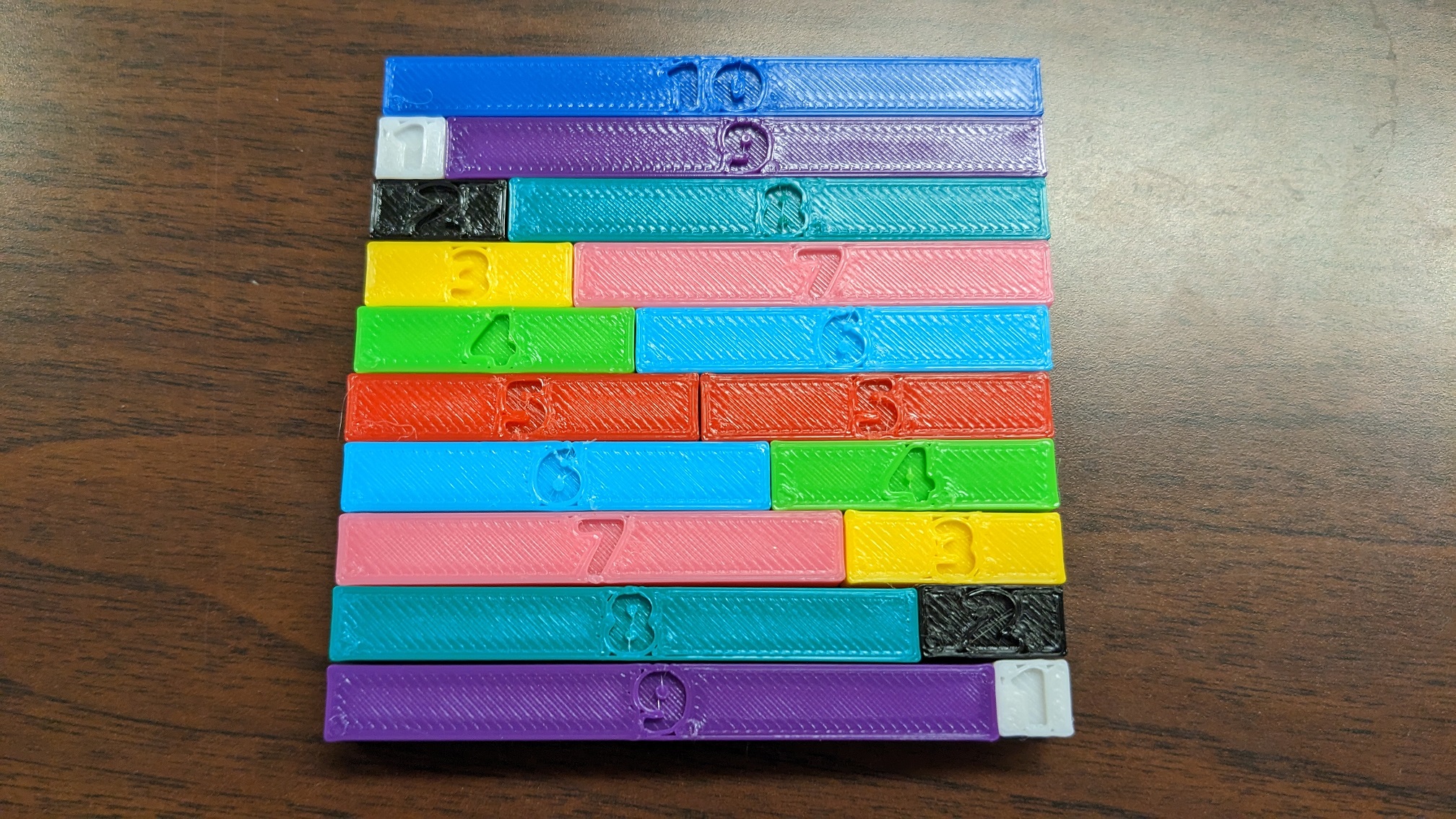Overview
Number rods are a length-based manipulative with each of the centimeter-based lengths color-coded to match a specific length. For example, for the labeled number rods below all the 10s are blue, 9s are purple, etc. For the unlabeled, all the 10s are orange, 9s are blue, etc. Your rods can have a different color scheme than some versions of this manipulative (i.e., Cuisenaire rods), and can include the symbolic numeral (the written number). Or, you can print them to match whatever you wish.
The rods can be used for multiplication/division, as well as addition/subtraction in early elementary and preschool/pre-Kindergarten. The unlabeled rods can also be used for fractions.


MakerSpace Files
Array rods will need to be 3D printed. Below are estimates for the amount of material, along with recommended color schemes. The estimated costs are conservative estimates and you may be able to find less expensive filament.
Click here to download the set of files in Thingiverse for labeled Number Rods.
Click here to download the set of files in Thingiverse for unlabeled Number Rods.
Each link includes stl files for 3D printers.
Note: If you have not read the tutorial post on MakerSpace Manipulatives, please do so.
| grams of PLA | Cost ($18 / KG | Time w/ 0.6mm nozzzle | ||
| 1s (n = 20) | White | 16.72 | $0.30 | 56 min |
| 2s (n = 12) | Black | 18.04 | $0.32 | 44 min |
| 3s (n = 12) | Yellow | 24.64 | $0.44 | 55 min |
| 4s (n = 12) | Light Green | 33.91 | $0.61 | 1 hr 16 min |
| 5s (n = 12) | Red | 41.91 | $0.75 | 1 hr 32min |
| 6s (n = 12) | Light Blue | 49.91 | $0.90 | 1 hr 47min |
| 7s (n = 12) | Pink | 57.91 | $1.04 | 2 hr 3 min |
| 8s (n = 12) | Dark Green | 65.91 | $1.19 | 2 hr 19 min |
| 9s (n = 12) | Purple | 73.88 | $1.33 | 2 hr 35 min |
| 10s (n = 12) | Dark Blue | 81.87 | $1.47 | 2 hr 51 min |
| Total (n = 128) | 464.70 | $8.31 | 18 hr 58 min |
Examples of Use
Composing/Decomposing Numbers in Addition
Students can use number rods to learn how to compose/decompose numbers when learning to add with regrouping. In the below example, a two-digit number and one-digit number are added together. It’s important to do these types of numbers first as having two two-digit numbers adds a layer of complexity and students may not see the connection between decomposing the ones and making 10s.
In the example problem below, a child can add 28 + 17 by combining all 10s and then reconsidreing 7 as a 2 and 5 (so that 8+2 makes another 10).


Making 10s
A common kindergarten and 1st grade activity is learning fact families. Below illustrates how number rods can be used to learn fact families for 10s. Here also, a child can see that facts such as 1+9 and 9+1 are the same (i.e., Commutative Property).

More to come…
